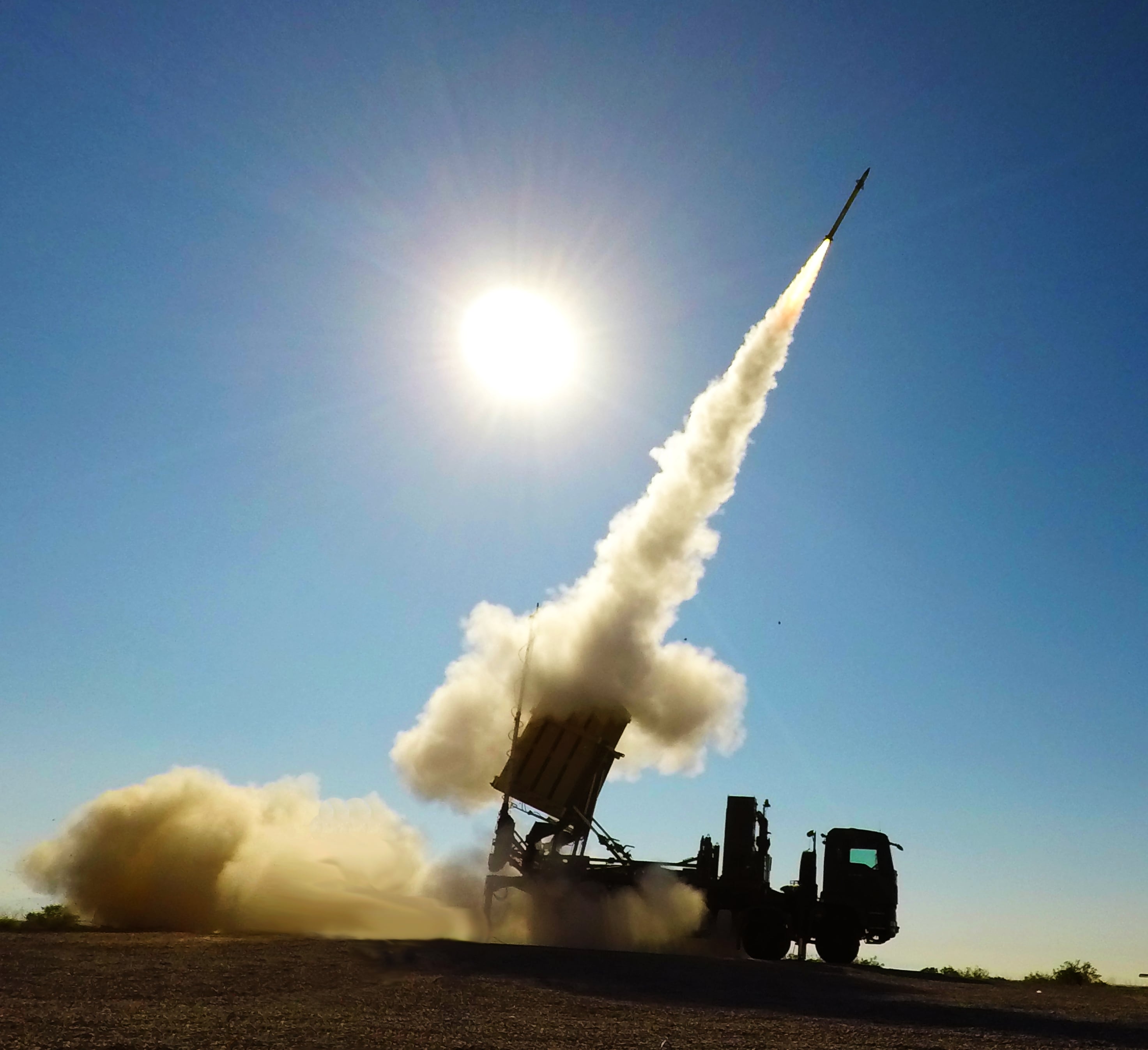WASHINGTON — American firm Raytheon Technologies and Israeli-based Rafael Advanced Defense Systems have formed a joint venture to build the Iron Dome missile defense system in the United States, the companies announced Aug. 3.
Under the name Raytheon Rafael Area Protection Systems, the partnership is being set up to build a first-ever Iron Dome “all-up-round” facility stateside. The facility will build Iron Dome systems, the Tamir interceptor and launcher, and the SkyHunter missile (the U.S. version of Tamir), according to a Rafael-issued statement.
Tamir and SkyHunter are capable of intercepting cruise missiles, unmanned aircraft, rockets, artillery, mortars and other threats.
The partnership expects to finalize a site location before the end of the year, the statement said.
“This will be the first Iron Dome all-up-round facility outside of Israel, and it will help the U.S. Department of Defense and allies across the globe obtain the system for defense of their service members and critical infrastructure,” Sam Deneke, vice president of Raytheon Missiles & Defense’s land warfare and air defense business.
Rafael and Raytheon have had a long partnership developing and manufacturing Iron Dome. The system is widely fielded in Israel and, according to Rafael, is “the world’s most-used system with more than 2,500 operational intercepts and a success rate exceeding 90 percent.”

The U.S. Army has chosen Iron Dome as an interim capability to counter cruise missiles while it continues to develop a future Indirect Fires Protection Capability, or IFPC, to counter those threats as well as enemy drones, rockets, artillery and mortars. Congress mandated the service buy two batteries to cover urgent cruise missile defense gaps, and another set of two if the Army didn’t come up with a way forward for its enduring IFPC.
While the Army has said it will not buy all-up Iron Dome systems as part of the IFPC program, officials developing the capability are looking at the possibility of incorporating parts of Iron Dome in the final solution.
The Army plans to field Iron Dome by the end of the year, but it will still take time to train troops on the system before deployment. Some lawmakers are urging the Army to rapidly deploy the systems to the Middle East, arguing U.S. and coalition forces there need the protection from Iran and its proxies.
In and analysis conducted by the Army, it was concluded the Iron Dome launcher and the Tamir interceptor’s performances are “highly reliant” on their own battle management systems and multimission radars. The analysis also determined that the launcher and interceptor would be a viable option for an enduring IFPC solution as long as it worked on the Army’s future Integrated Air-and-Missile Defense Battle Command System, or IBCS, which is under development, according to a report sent to Congress earlier this year.
But Gen. Mike Murray, the head of Army Futures Command, which is in charge of the service’s modernization efforts, testified before the House Armed Services Committee earlier this year that the Army has struggled to integrate Iron Dome into its IBCS system, mostly because the Israeli government has refused to provide critical source code needed for the integration.
The Tamir interceptor’s performance data proves its effectiveness when used within the Iron Dome system, but since data is lacking, it’s uncertain how well it would perform when linked through IBCS to the Sentinel radar, which is used to alert air defense weapons of threats, the report noted.
The service will conduct a shoot-off of best available options for integration into an enduring IFPC solution in the third quarter of fiscal 2021.
The U.S. Marine Corps is also evaluating the system.
Jen Judson is an award-winning journalist covering land warfare for Defense News. She has also worked for Politico and Inside Defense. She holds a Master of Science degree in journalism from Boston University and a Bachelor of Arts degree from Kenyon College.







